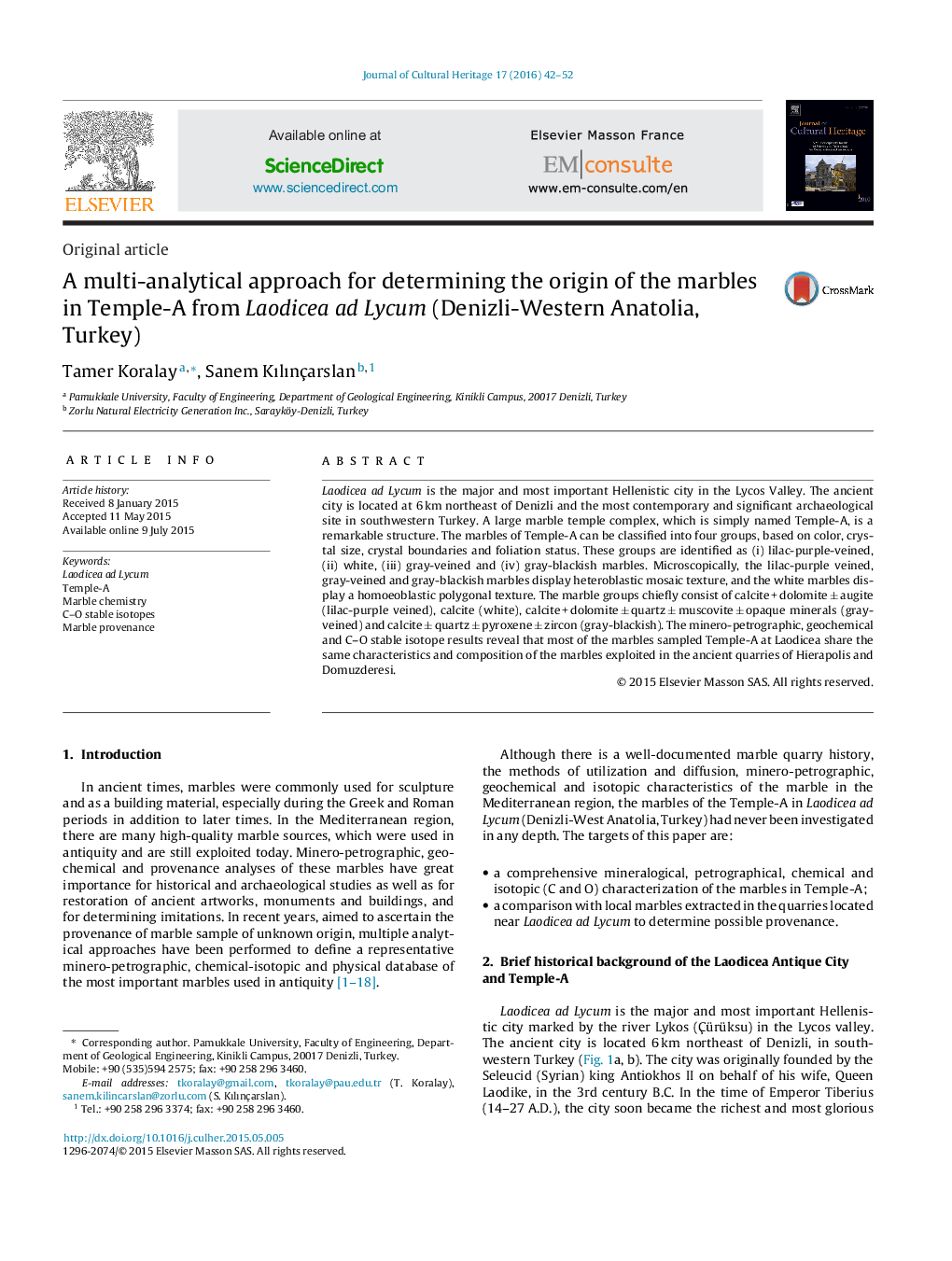| Article ID | Journal | Published Year | Pages | File Type |
|---|---|---|---|---|
| 1037840 | Journal of Cultural Heritage | 2016 | 11 Pages |
Laodicea ad Lycum is the major and most important Hellenistic city in the Lycos Valley. The ancient city is located at 6 km northeast of Denizli and the most contemporary and significant archaeological site in southwestern Turkey. A large marble temple complex, which is simply named Temple-A, is a remarkable structure. The marbles of Temple-A can be classified into four groups, based on color, crystal size, crystal boundaries and foliation status. These groups are identified as (i) lilac-purple-veined, (ii) white, (iii) gray-veined and (iv) gray-blackish marbles. Microscopically, the lilac-purple veined, gray-veined and gray-blackish marbles display heteroblastic mosaic texture, and the white marbles display a homoeoblastic polygonal texture. The marble groups chiefly consist of calcite + dolomite ± augite (lilac-purple veined), calcite (white), calcite + dolomite ± quartz ± muscovite ± opaque minerals (gray-veined) and calcite ± quartz ± pyroxene ± zircon (gray-blackish). The minero-petrographic, geochemical and C–O stable isotope results reveal that most of the marbles sampled Temple-A at Laodicea share the same characteristics and composition of the marbles exploited in the ancient quarries of Hierapolis and Domuzderesi.
